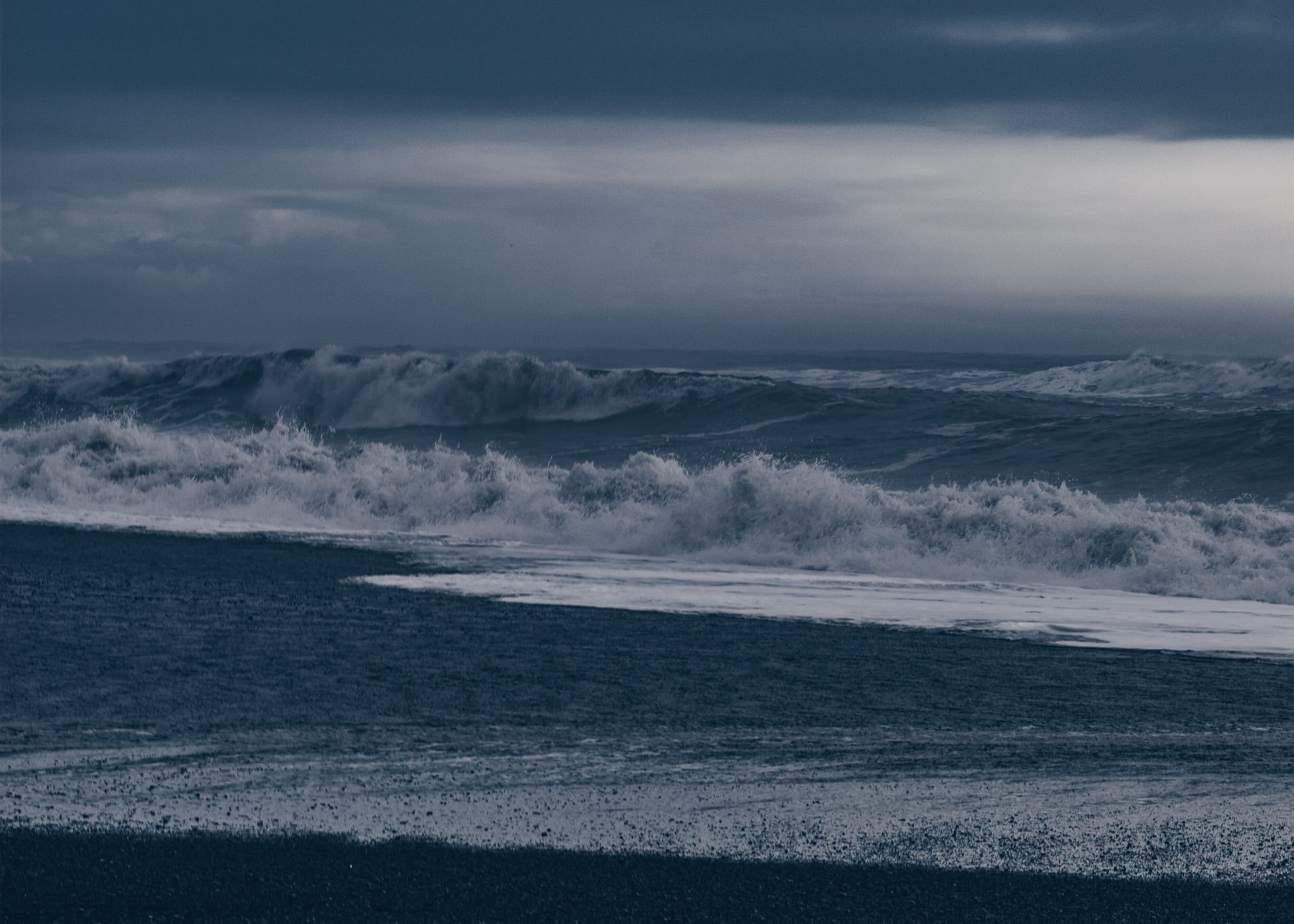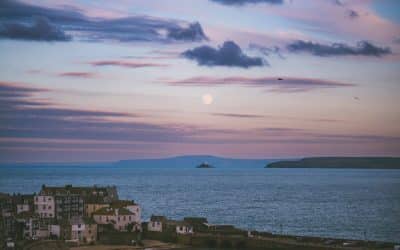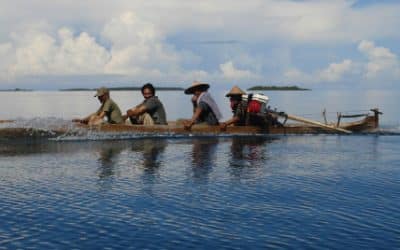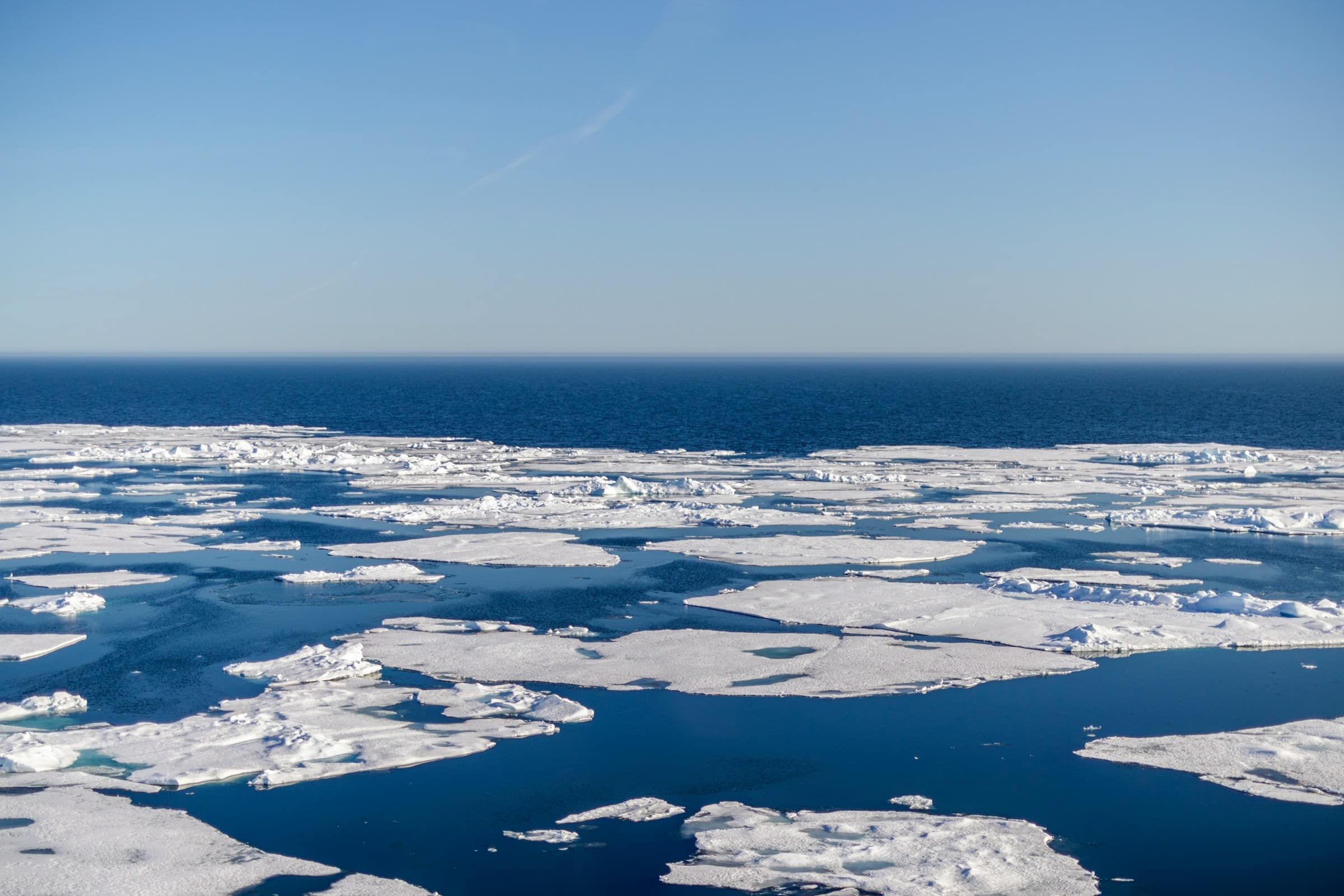The Geoengineering Map Updates summarise the latest developments on the Geoengineering Monitor Map highlighting new trends for civil society and climate justice movements to follow in their efforts to oppose geoengineering.
By Anja Chalmin
Critical Updates on Marine Geoengineering
- A double-digit number of new ocean or near-shore marine geoengineering experiments are in the pipeline. Most are aimed at testing and commercialising Ocean Alkalinity Enhancement (OAE) or Direct Ocean Capture (DOC). Venture capital and carbon credits are their main sources of funding.
- Geoengineering companies interested in commercialising carbon credits present the geoengineering projects they initiate as safe and long-term CO2 storage options – even though there are no independent studies to back this claim. Possible concerns and risks are being concealed, even in the face of numerous studies raising concerns.
Recent updates on marine geoengineering
There are a growing number of companies generating or seeking to generate carbon credits through marine geoengineering, and an increasing number of approaches to dumping CO2 into or removing CO2 from the oceans. Researchers warn that marine geoengineering could have disastrous consequences for marine life, including devastating effects on the marine food web. The International Maritime Organisation (IMO) states that marine geoengineering technologies “have the potential to cause deleterious effects that are widespread, long-lasting or severe” and highlights that “there is considerable uncertainty regarding the effects on the marine environment, human health, and on other uses of the ocean”. Many marine geoengineering companies are already generating carbon credits, while claiming that the use of their technology is effective and safe – independent assessments to confirm this are not available. The technical approaches are immature, for example in the case of ocean alkalinity enhancement (OAE), which is about to be tested in several outdoor experiments. OAE aims to add alkaline substances such as olivine (a soft, green volcanic rock) to seawater. These substances are intended to remove CO2 dissolved in seawater, producing CO2-depleted water. But CO2-depleted water can only absorb atmospheric CO2 if it rises to the surface and comes into contact with the air – which can take hundreds of years. The following describes some of the marine geoengineering activities recently planned or underway.
UK: Locals demand independent environmental impact assessment for trials off their coast in St Ives Bay / Canada: Bedford Basin and Halifax Harbour to undergo similar trials
The Canadian company Planetary Technology, Inc. plans to dump up to 450 tonnes of magnesium hydroxide (Mg(OH)2) into the sea in St Ives Bay, Cornwall, UK. Planetary is developing and marketing so called Ocean Alkalinity Enhancement (OAE), which aims to mimic natural weathering and increase the alkalinity of the ocean. The company believes that OAE will allow the ocean to absorb more CO2 from the atmosphere. Planetary says it searched the world for suitable sites and chose St Ives Bay because the water is shallow but well-mixed by turbulence. The Mg(OH)2 will be sourced from China, Canada, and the UK, will be mixed with wastewater in the Hayle treatment plant and discharged into the sea approximately 2.5 kilometers offshore via an 11-kilometre pipeline into the bay. Due to protests, the project has been postponed from the spring to the summer of 2023. Local residents are concerned about possible unintended negative side-effects and call for an independent environmental impact assessment. Planetary claims that OAE is harmless, that OAE removes CO2 in the long term, and presents Mg(OH)2 as a harmless natural mineral that is well established in the treatment of wastewater. There are some obvious objections:
- The company has commercial interests, for example Planetary sells CO2 credits to Shopify.
- Mg(OH)2 occurs naturally as brucite, but the deposits are small. For industrial use, therefore, it is usually precipitated from sea water and then dried at high temperatures – a process that requires a great deal of energy.
- Planetary is looking to work in the gigatonne range – by comparison, the amounts of Mg(OH)2 used by the wastewater treatment companies would seem to be very small.
- There are a number of concerns about the technical approach and security of OAE (this recent article on the experiment in Nature describes its technical challenges; this recent CBC article analyses further risks).
In late 2022, Planetary Technology announced plans to conduct similar pilot trials in the Bedford Basin and in Halifax Harbour in Nova Scotia, Canada. According to a report from Dalhousie University, the company will be working with Nova Scotia Power to experiment with the effluent from the Tuft’s Cove Generating Station. The plant draws water from the Bedford Basin for use as cooling water and then discharges it again. Mg(OH)2 will be added to the effluent discharged into the bay. The test is scheduled to start in September 2023. Information on Halifax Harbour trial partners, timing and process is not yet public.
USA, Carbon to Sea Initiative: Funding for OAE and streamlining open-ocean testing permits
In 2022, former Meta Chief Technology Officer Mike Schroepfer has launched an initiative to fund research into ocean alkalinity enhancement (OAE). The Carbon to Sea Initiative aims to be “the leading initiative to evaluate whether ocean alkalinity enhancement can safely remove and store billions of tons of CO2.” The Additional Ventures Foundation, co-founded by Schroepfer, and a group of other foundations have committed more than US$ 50 million over five years to the initiative. The Carbon to Sea Initiative seeks to evaluate new technological approaches to OAE, enable field testing in the ocean, simplify the permitting process for open ocean experiments, and generate more public research funding for OAE:
- The first round of funding is supporting nine projects, including the Ocean Alk-align Consortium in Canada (US$ 11 million), the LOC-NESS project at Woods Hole Oceanographic Institution (WHOI) in the US (US$ 5 million), the POaET project at Heriot Watt University in the UK (US$ 0.66 million), trials at the University of California, Santa Barbara in the US (US$ 0.5 million), electrochemical OAE projects by Ebb Carbon and CREW Carbon (US$ 1.3 million), and at the University of Toronto (US$ 0.8 million).
- The Ocean Alk-align consortium, led by Katja Fennel of Dalhousie University, Canada, aims to evaluate the efficacy and environmental risks of different alkaline feedstocks for OAE. The five-year R&D programme will be carried out in collaboration with the Australian Institute for Marine and Antarctic Studies (IMAS), Australia’s Southern Cross University, Germany’s GEOMAR and the University of Hamburg. The participants have already been involved in several marine geoengineering projects, in particular GEOMAR, Southern Cross University, and the University of Hamburg. The research will be conducted in laboratory, mesocosms and field experiments. Information on the specific research projects is not yet publicly available.
- The Locking away Ocean Carbon in the Northeast Shelf and Slope (LOC-NESS) project is carried out at the Woods Hole Oceanographic Institution (WHOI) in Massachusetts. The project intends “to accelerate the understanding of OAE as a potential method for large-scale carbon dioxide removal”. A total of four experiments in the open-ocean are part of the project and are scheduled to be conducted between summer 2023 and summer 2025. In August 2023, the research vessel R/V Connecticut plans to release the dye rhodamine into the ocean in waters about 15 kilometres south of Massachusetts and track its dispersion in the water over 72 hours. In the summer of 2024, the dye and alkaline material will be released into the ocean twice. A full-scale OAE experiment is planned for the summer of 2025. The nature and quantity of the alkaline material is not yet publicly disclosed.
- Since 2018, the Seaweed CDR working group at the University of California, Santa Barbara has been working on the sinking of algal biomass in the deep ocean. The Carbon to Sea Initiative has awarded funding to Debora Iglesias Rodriguez’s team to conduct a two-year project on OAE. The project studies the response of phytoplankton organisms and communities to different OAE methods in the laboratory and in mesocosms. The mesocosm studies will be conducted in the Santa Barbara Channel. Information on the timing and extent of the mesocosm studies has not yet been released.
- CREW Carbon is a spin-off from the Yale Carbon Containment Lab at Yale University, New Haven, USA. The company’s approach combines the capture of CO2 from ambient air (direct air capture) with enhanced weathering in CO2-rich wastewater. The first CREW Carbon project will be implemented in partnership with a wastewater treatment plant near New Haven. No information is available on the status of the project, but CREW Carbon has already sold carbon credits from this project to Frontier in late 2022. Starting in 2023, CREW Carbon’s approach will be further developed in partnership with Ebb Carbon and with funding from the Carbon to Sea Initiative. The California-based Ebb Carbon emerged from the SEA MATE (Safe Elevation of Alkalinity for the Mitigation of Acidification Through Electrochemistry) research project at Stony Brook University, New York and seeks to commercialise an electrochemical process for removing acid from seawater, with the aim of fixing more CO2 in the form of bicarbonate in the oceans and reducing ocean acidification. The first Ebb Carbon system was scheduled to go live in 2022, but this has been postponed indefinitely. In April 2023, Ebb Carbon raised US$ 20 million in a fundraising round from Congruent Ventures, Evok Innovations, Grantham Environmental Trust, Incite and Prelude Ventures.
- With funding from the Carbon to Sea Initiative, Planetary Technologies aims to develop sensors that optimise the efficiency of OAE, for example, by measuring the ocean pH.
USA / Dominican Republic: Vesta pilot trials in coastal waters / Vesta’s Advisory Committee identifies many flaws in Vesta’s experimental design
The San Francisco-based company Vesta seeks to test enhanced weathering with olivine in coastal waters. Vesta plans to mine olivine, grind it into small pebbles and spread them on beaches where wave action is expected to enhance the weathering process. Vesta’s subsidiary, Vesta North Carolina, PBLLC, seeks to test and scale enhanced weathering with olivine in the nearshore waters off Duck, North Carolina. The outdoor experiment has been planned since 2021 and the permit application for the experiment was submitted in 2022. Vesta had hoped to deploy the olivine at this site in spring 2023. This has now been pushed back to 2024, for unknown reasons. At this site, Vesta plans to deploy about 4,700 m³ of ground olivine in nearshore waters, about 450 meters offshore, at a water depth of 7.5 meters.
Another Vesta pilot project is more advanced. In July 2022, Vesta deposited 650 tonnes of olivine over 400 metres at North Sea Beach, a beach north of Southampton on Long Island in eastern New York. According to a recent report on the project in Nature, Vesta believes the experiment will remove around 400 tonnes of CO2 from the atmosphere and plans to sell carbon credits on this basis. The same article points out that this assumption is very shaky, partly because the weathering process can take several hundred years. It also notes that the risks of using the technology have not been clarified.
Another Vesta test site is located in two adjacent bays northwest of Puerto Plata in the Dominican Republic. Testing at this site is being conducted in two phases: a baseline environmental assessment in Phase 1 and the application of olivine and follow-up environmental assessments in Phase 2. Information on the current status of the project is conflicting and not transparent: the approval of Phase 1 is discussed on the Project Vesta Advisory Committee (PVAC) website. The Vesta website and other sources refer to mesocosm experiments with olivine, which according to the experiment description are not part of Phase 1.
Based at the American University in Washington DC, the PVAC has been in existence since at least 2023, and was founded by Wil Burns. The PVAC is mainly concerned with the coastal experiments in the Dominican Republic, but only consists of members from the Northern Hemisphere (10) and Australia (1). The Committee reviewed Vesta’s experimental design for Phase 1 and found many of Vesta’s claims to be “unproven” or “exaggerated“. It also found many inaccuracies, including in the experimental design and in the chemical and ecological bases of the experiments.
USA: New Direct Ocean Capture (DOC) pilot trials off Los Angeles
The Los Angeles-based SeaChange aims to develop and test an electrochemical process to capture carbon from seawater. The company was founded by Gaurav N. Sant to commercialise research from the University of California. The SeaChange process extracts CO2 from seawater and converts it into carbonates. This chemical reaction is triggered by electrolysis, which allows the CO2 dissolved in the seawater to combine with magnesium or potassium also dissolved in the water. The result is a white powder to be disposed of by dumping into the sea and sinking to the seabed. About 220 tonnes of water need to be treated with the Seachange process to remove one tonne of CO2. The by-product is 35 kilograms of hydrogen, which covers about fifty per cent of the energy required for the process – about two megawatts per tonne of CO2. To conduct a pilot test, SeaChange has partnered with AltaSea, a public-private research institute focused on ‘blue economy’ at the Port of Los Angeles. The pilot test started in May 2023 and is being conducted from a 30-metre boat in the Port area.
The AltaSea location in the Port of Los Angeles will also be the site for Captura’s second DOC pilot trial. Captura was founded in 2021 as a spin-off from the California Institute of Technology (Caltech) to develop and commercialize a technology for removing CO2 from seawater. The electrochemical approach works by splitting seawater molecules into acids and bases. By shifting the pH of the seawater, the CO2 is released from carbonates and bicarbonates. In May 2023, Captura announced the construction of its second pilot plant in the Port of Los Angeles at AltaSea. The pilot plant is expected to be operational in 2023, capture one hundred tonnes of CO2 per year and is funded by Southern California Gas Company. Captura has not yet resolved what will happen to the CO2 released. The company proposed to make the captured CO2 available as a feedstock (CCUS) or to compress it underground (CCS). Both options are very energy and cost intensive and do not provide permanent and/or safe storage.[i]
The Netherlands: Direct Ocean Capture (DOC) pilot trial off the Dutch coast
SeaO2 is a Dutch company founded in 2021 by Ruben Brands, David Vermaas and Rose Sharifian to commercialise a technology developed at Delft University of Technology and Wetsu Laboratories. The SeaO2 technology aims to remove CO2 from seawater through an electrochemical process. The CO2 separated from the seawater is to be used as a feedstock in products (CCUS) or injected underground (CCS). This process is expected to enable the oceans to absorb more CO2 from the atmosphere. A prototype will be developed and tested on the Dutch coast at Breezanddijk in 2023, followed by a pilot-scale test in 2024.
European Union: Strategies for the Evaluation and Assessment of Ocean-based CO2 Removal
The four-year Horizon Europe project “Strategies for the Evaluation and Assessment of Ocean-based Carbon Dioxide Removal” (SEAO2-CDR) is investigating the feasibility of CO2 storage in the ocean and aims to assess ocean carbon removal from scientific, economic, legal, political, social and ethical perspective. Thirteen European research centres and universities are participating in the project, including the National Oceanography Centre, UK, lead; Uniresearch, Netherlands; University of Cambridge, UK; Heriot Watts, UK; University of Leipzig, Germany; Kiel Institute for the World Economy, Germany; Leiden University, Netherlands; GEOMAR Helmholtz Centre for Ocean Research, Germany; Centre for Social and Economic Research,Poland; Pontifical University of Comillas, Spain; LUISS University, Italy; University of Kiel, Germany; and the World Ocean Council, France.
UK / Caribbean: Sinking sargassum seaweed into the deep sea
Seaweed Generation Ltd is a CDR company founded in 2021 and is registered in Cornwall, England. The company aims to develop robots to grow, capture and sink sargassum seaweed into the deep sea. Seaweed Generation has announced a first sargassum sinking pilot in the Caribbean in 2023, with further growth in 2024, and expects “our main source of revenue will be from carbon dioxide removal credits, thanks to sinking Sargassum into the deep ocean”. The exact location, timing and extent of the project have not yet been disclosed. The company’s scientific advisory board is made up of seven people, six from the UK and US and one from Antigua and Barbuda, which could be a clue to the location of the upcoming trial.
India / USA / Norway / Arctic Ocean: Experiments with reflective material on ice
In 2022, Leslie Fields founded the Bright Ice Initiative and announced plans to test a reflective cover material on the Chhota Shigri glacier in the Indian Himalayas in 2023. The field trial will last three years and was due to start in June 2023, but has been delayed by two months, probably because the approval processes in India have not been fully completed. A study published in Earth’s Future in October 2022 by M.A. Webster (University of Alaska Fairbanks) and S.G. Warren (University of Washington) showed that the reflective cover material accelerated melting rather than slowing it. The authors concluded that: “The use of microspheres as a way to restore Arctic sea ice isn’t feasible“.
The Arctic Ice Project (AIP), which was also founded by Leslie Fields, proposes to cover Arctic ice or land ice with a layer of floating reflective material to slow down the melting of the ice and/or to restore the ice. According to a press report, AIP once again conducted tests last winter on Lake Elmo, a shallow, man-made pond in Lake Elmo County, Minnesota. AIP is also preparing experiments with reflective cover material on sea ice to be carried out in collaboration with Sintef in Svalbard, Norway. In 2018, Leslie Field proposed and modelled covering 15,000 km2 to 100,000 km2 with reflective silica glass in selected Arctic regions such as Fram Strait or the Beaufort Gyre. Modelling has continued and AIP is currently working with Climformatics to undertake more extensive modelling in two areas of the Beaufort Gyre with the aim of publishing the results in 2024.
Peru: CUSCO project results
The project “Coastal Upwelling in a Changing Ocean” (CUSCO) was coordinated by the German GEOMAR Helmholtz Centre for Ocean Research from 2018 to 2021. The project involved an experiment with nine mesocosms in the coastal waters off Callao, in the Humboldt Current off Peru, to test, for example, the effects of varying upwelling intensities on plankton communities and biomass production. In March 2023, researchers supported by the CUSCO project published their results. The results show that artificial upwelling has changed the conditions for small marine organisms and has had a negative impact on the reproduction of small crustaceans, for example. These changes could have serious consequences for marine food webs and fish production.
[i] CCS Technology Briefing: https://www.geoengineeringmonitor.org/2021/04/carbon_capture_storage/; CCUS Technology Briefing: https://www.geoengineeringmonitor.org/2021/04/carbon-capture-use-and-storage/




